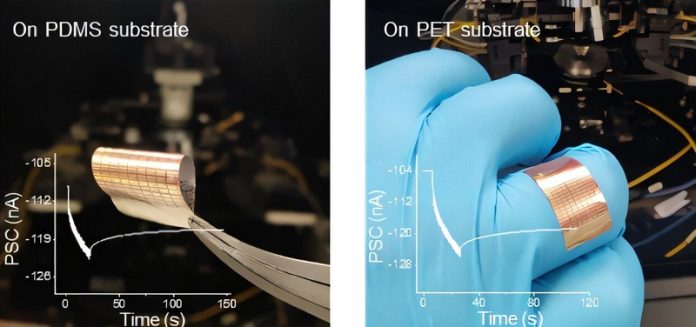
Scientists at City University of Hong Kong (CityUHK) have developed a revolutionary wearable device that mimics the extraordinary vision of birds while using almost no power.
This breakthrough could change how autonomous machines, like self-driving cars and robots, see and interact with their environment.
Their research was recently published in Nature Communications.
Machine vision is a key technology for many modern systems, such as autonomous vehicles and robotics, which need to recognize and respond to their surroundings in real-time. However, traditional vision chips are power-hungry and struggle to process complex visual information efficiently.
To solve this problem, a team led by Professor Johnny C. Ho from CityUHK designed a new type of vision system that is both energy-efficient and highly effective, even in low-light conditions.
This innovation combines advanced materials with artificial intelligence (AI), allowing machines to “see” more clearly while using minimal energy.
The new device uses special nanomaterials, including GaAs nanowire arrays and organic films, to create a unique visual processing system. Unlike traditional vision chips, this technology works more like a biological eye, quickly detecting details such as shape, movement, color, and even ultraviolet (UV) light.
One of the biggest challenges in this research was ensuring the materials were precisely arranged to perform consistently across different surfaces.
The team successfully developed a method to achieve this, making the device highly adaptable for various applications.
This wearable visual system could be integrated into many technologies, including:
- Smart Driving – Helping autonomous vehicles detect objects more accurately, especially in poor lighting.
- Robotics – Enhancing machine vision for robots used in industries, healthcare, and even personal assistants.
- Advanced Vision Devices – Creating improved imaging tools for surveillance, security, and scientific research.
The research team plans to further develop this technology by integrating it with external circuits, making it even more functional and compatible with AI-driven systems. Their goal is to create a seamless interaction between hardware and software, bringing intelligent vision systems closer to everyday use.
This exciting advancement could lead to a future where machines “see” as well as birds—if not better—while using almost no energy.



